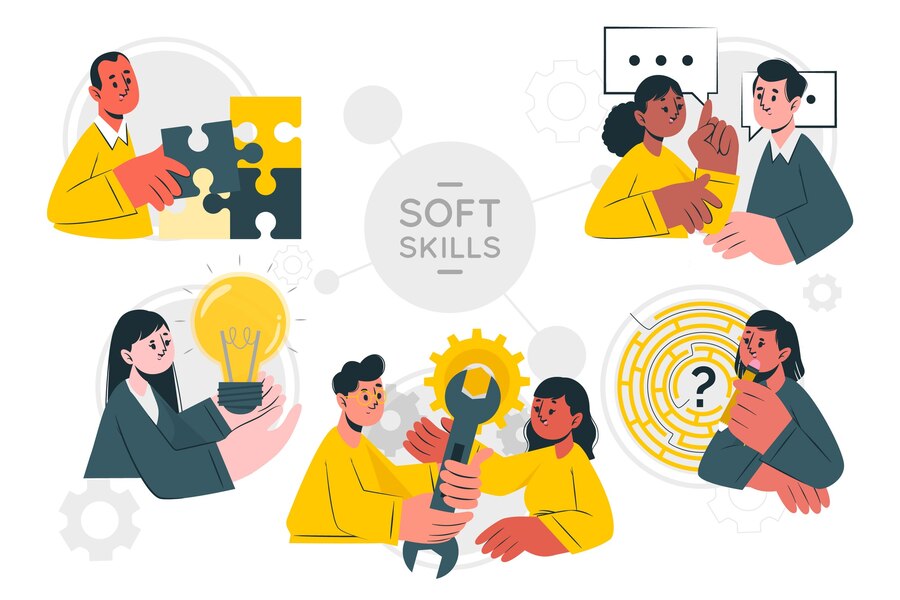One document frequently used in the employment process is a resume. It contains details about your experience and credentials and should provide companies with the most crucial, pertinent information about you in an understandable manner. The objective is to clearly lay out how your experiences and skill set make you uniquely suitable for the role.
You can adhere to a few easy procedures and best practices to write a CV that will catch the attention of employers. Making your resume legible and pertinent is the primary objective to remember.
How To Create A Professional Resume?

The techniques and samples that follow will assist you in creating a professional CV.
1. Start by choosing the right resume format
Let’s examine how each of these resume parts should be written in more detail. Examine resume examples from your sector and job title to get further ideas while creating or revising your own.
The arrangement and style of the material on your resume is known as its “format.”
If you have a strong professional job history with no gaps in employment, a chronological resume structure is a smart choice. It places the professional history section first. If you have gaps in your job history or are changing sectors, the functional resume style is a suitable choice since it places a strong focus on the skills section.
If you have some job experience where your talents and work history are equally relevant, the combo resume format is an excellent choice.
2. Include your name and contact information
Your name and contact details, such as your phone number and email address, should be at the top of your resume. Whether or not to provide your mailing address is up to you. Your resume should start with your name prominently displayed in a typeface that is bolded or bigger than the rest of the paper, but no greater than 14 points. For instance, if you are looking for creative jobs, you may also add a link to your online portfolio.
3. Add a resume summary or objective
You might choose to insert an objective statement or resume summary below your contact details. For people with little professional experience, such as recent college or high school grads, an objective statement is an excellent option because it succinctly outlines your career ambitions. A resume summary is a succinct statement that highlights your relevant job experience and abilities using active language.
4. List your soft and hard skills
Think about the abilities that make you an excellent fit for the position. Go over the job description and mark terms that you have previously used successfully. Think about transferable talents that you can employ when switching sectors or occupations, as well as hard (technical) and soft (interpersonal) skills.
Employer-relevant keywords should be used to create a skills section. Start by listing any necessary qualifications, such as licenses or certificates.
5. List your professional history with keywords
In reverse chronological order, write your career history section. Start with your most recent position and give a brief overview of it, including the name of the organization, the length of time you were there, your job title, and a few noteworthy accomplishments. You might also include any pertinent lessons you learned or possibilities for development you had while working there.
6. Consider adding optional sections
Think about including a section on your accomplishments or hobbies if your resume has a lot of open space. Particularly for people with little employment or school background, this can support a shorter résumé. Make sure your listed accomplishments and interests align with your professional objectives and are pertinent to prospective employers.
7. Proofread your resume
Check your resume carefully for punctuation, grammar, and spelling mistakes. By rearranging the language on your resume, reading it backwards might help you spot mistakes. Asking dependable friends, coworkers, instructors, and relatives to look over your CV is also a good idea. Opinions from others might assist you in uncovering new facts that you might have missed.
If your resume is more than one page, look for methods to condense or reduce each section by eliminating unnecessary content or filler words. If you are applying to high-level jobs in fields like academics or healthcare, two pages can be sufficient.
8. Tailor your resume for each position
Your resume should be updated to reflect each employment you apply for. Make sure the skills section’s keywords are a perfect match for the employer’s requirements for each position. Depending on the job description, you should also adjust the focus in the sections on professional history and educational experiences.
In a nutshell

For job searchers, writing a professional CV is crucial. You may create a CV that successfully showcases your abilities, accomplishments, and experience by adhering to these recommendations. Make sure it is precise, succinct, and relevant to the position you are applying for. Your resume can stand out if it is proofread and formatted correctly. Keep in mind that your resume serves as your first impression, so make the most of it by presenting your greatest qualities in an engaging and well-structured way.
Do you want to know more about how to build a resume from scratch? Then, feel free to avail of an EnrichMyCareer 15-minute career counselling session.
Visit EnrichMyCareer for more information.
Frequently Asked Questions
1. What are the 3 C’s of a resume?
Keep in mind the Three C’s Rule while you create and edit your resume: concise, clear, and consistent. This is probably being forwarded to a person who doesn’t know anything about you. Your resume should be concise, visually appealing, answer questions, and adhere to a consistent format.
2. What is the core skill in a CV?
The knowledge, skills, and abilities that facilitate efficient work performance are referred to as core competencies. They offer transferable abilities that may be used in a variety of professions and sectors, going beyond technical skills.

A content writer with a passion for crafting engaging content. Dedicated to continuous learning and innovative, excels at adapting diverse writing styles.



